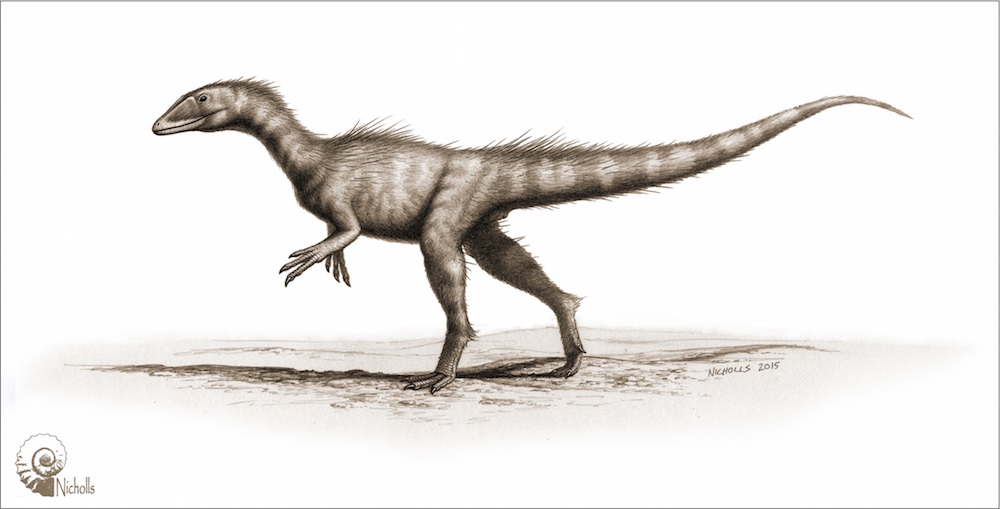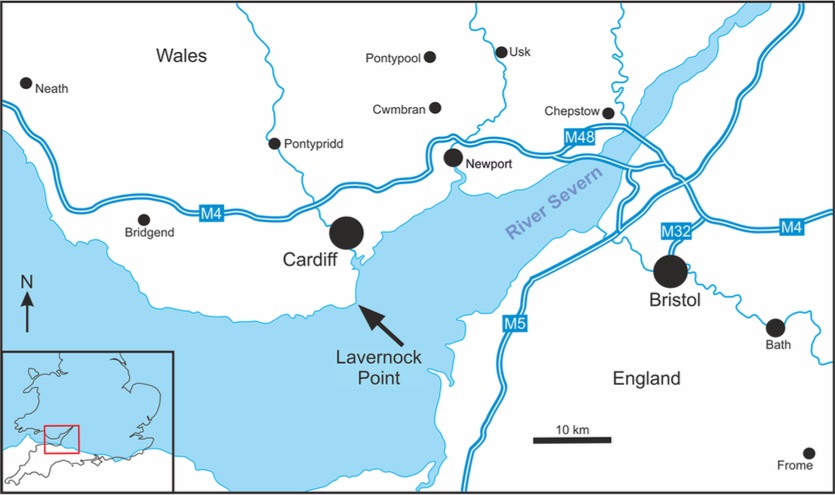Mini T. Rex: 'Welsh Dragon' May Be Earliest Jurassic Dinosaur

Two brothers hunting for ichthyosaur fossils along the coast of the United Kingdom came across something far more astounding: The bones of what may be the earliest known dinosaur from the Jurassic period in the U.K., and possibly even the world, a new study finds.
After finding the bones in 2014, Rob Hanigan contacted his brother, Nick. The two scoured the coast, located just south of Wales, for more of the fossils, taking careful geological notes along the way.
Later, they reached out to paleontologists at the University of Portsmouth, who confirmed that the bones belonged to a theropod, a group of mostly meat-eating dinosaurs. Moreover, the paleo-beast lived at a key point of dinosaur diversification at the beginning of the Jurassic, said study co-author Steven Vidovic, a doctoral researcher of paleontology at the University of Portsmouth. [In Photos: Wacky Fossil Animals from Jurassic China]
"It's a jumbled mix of bones that are a real puzzle to put back together," Vidovic told Live Science in an email. "It was very rewarding reconstructing it."
The researchers named the newfound species Dracoraptor hanigani, which roughly translates to "dragon raptor." (The dragon is the national symbol of Wales.) It also honors Nick and Rob Hanigan for the find and for donating the specimen to the "Amgueddfa Cymru" — National Museum of Wales.
During its lifetime, about 201 million years ago, D. hanigani likely hunted or scavenged meat with its tiny, pointy teeth that measured less than 0.4 inches (1 centimeter) long. However, its teeth weren't yet full size. A bone analysis suggests that D. hanigani was likely a juvenile, largely because most of its bones had not yet fully formed or fused together, the researchers said.
Given its young age, D. hanigani was a shrimp compared with other theropods. Though its distant relative, Tyrannosaurus rex, stood up to 13 feet (4 meters) tall and measured up to 40 feet (12.3 m) long, D. hanigani stood only about 2.3 feet (70 centimeters) tall and measured about 6.5 feet (200 cm) long.
Get the world’s most fascinating discoveries delivered straight to your inbox.
The newfound dinosaur also sported a long tail, possibly to help with balance, the researchers said.
Little is known about dinosaurs during the earliest days of the Jurassic period, Vidovic added. "This is some of the very best fossil evidence that we have for this time," he said.
There are earlier dinosaur fossils dating to the Triassic period (between 251 million and 199 million years ago) in the United Kingdom. But the timing of this early Jurassic skeleton is important: The end-Triassic extinction led to the demise of more than 75 percent of all marine and land life, according to the Encyclopedia Britannica. This extinction event, which wiped out so many others, likely helped dinosaurs diversify and multiply, Vidovic said.
"About 200 million years later, the [newfound] dinosaur looks a little generic, but at the time in the early Jurassic, it was quite new and different," Vidovic said. "So the reason it might look a bit generic in hindsight is that loads of later dinosaurs repeated the winning formula."
The study was published online today (Jan. 20) in the journal PLOS ONE.
Follow Laura Geggel on Twitter @LauraGeggel. Follow Live Science @livescience, Facebook & Google+. Original article on Live Science.

Laura is the managing editor at Live Science. She also runs the archaeology section and the Life's Little Mysteries series. Her work has appeared in The New York Times, Scholastic, Popular Science and Spectrum, a site on autism research. She has won multiple awards from the Society of Professional Journalists and the Washington Newspaper Publishers Association for her reporting at a weekly newspaper near Seattle. Laura holds a bachelor's degree in English literature and psychology from Washington University in St. Louis and a master's degree in science writing from NYU.



